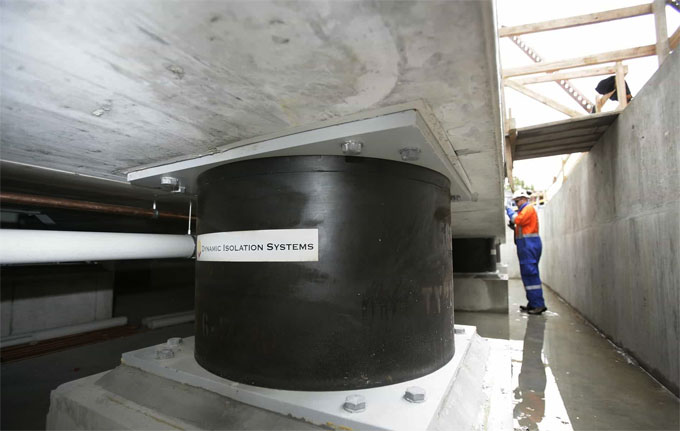Base isolation is a best in class technique where the structure (superstructure) is isolated from the base (foundation or substructure) by presenting a suspension system between the base and the primary structure.
In the setting of seismic design of structures, base isolation can be supplanted with seismic isolation i.e., the structure over the ground, which is generally influenced during earthquakes, is isolated from the impacts of earthquake powers by presenting an instrument that will assist the structure with hovering.
The idea of base isolation is very simple to get a handle on. It very well may be clarified as a fowl flying during an earthquake isn't influenced. In straightforward words if structure is drifting on its base, the development of ground will have no impact on the structure.
Motivation behind Base Isolation: Wind and Earthquake are the most transcendent loads that request sidelong design of a structure. Once more, earthquake load isn't controllable and it isn't handy to design a structure for an uncertain seismic interest. The Only pragmatic methodology left is to acknowledge an interest and ensure the limit is more than the interest.
The inertial powers caused because of the earthquake is legitimately corresponding to the mass of the structure and the ground speeding up. Expanding pliability of the structure or expanding the versatile quality of the structure is the most customary strategy for taking care of seismic interest. Specialist needs to build the limit to surpass the interest.
Base isolation adopts a contrary strategy, for example to decrease the seismic interest as opposed to expanding the limit. Controlling ground movement is incomprehensible, however we can adjust the interest on structure by forestalling/decreasing the movements being moved to the structure from foundations.
Guideline of Base Isolation: The essential standard behind base isolation is that the reaction of the structure or a structure is adjusted to such an extent that the ground underneath is fit for moving without transmitting negligible or no movement to the structure above. A total division is conceivable just in a perfect system. In a certifiable situation, it is important to have a vertical help to move the vertical loads to the base.
The overall displacement of ground and the structure is zero for an entirely rigid, zero period structure, since the speeding up instigated in the structure is the same as that of ground movement. While in a perfect flexible structure, there is no increasing speed actuated in the structure, accordingly relative displacement of the structure will be equivalent to the ground displacement.
No Structure is totally rigid or flexible, hence, the reaction of the structure will be between the two clarified previously. Most extreme increasing speed and displacements are a component of earthquakes for periods between zero to limitlessness. During earthquakes there will be a scope of periods at which speeding up in the structure will be intensified past most extreme ground increasing speed, however relative displacements may not surpass top ground displacements. Base isolation is the perfect strategy to cook this, by lessening the exchange of movement, the displacement of building is controlled.
Displacement happens at CG of the structures for fixed base structures, which will be approx. two-third stature for structures and at isolation plane for base disengaged structures with lesser displacement inside the structure. The reaction of a base confined structure and a structure without base isolation can be delineated as appeared in the figure beneath. The displacement and quickening is constrained by base isolation.

~~~~~~~~~~~~~~~~~~~~~~~~~~
Published By
Rajib Dey
www.constructioncost.co
~~~~~~~~~~~~~~~~~~~~~~~~~~
Published By
Rajib Dey
www.constructioncost.co
~~~~~~~~~~~~~~~~~~~~~~~~~~
No comments:
Post a Comment